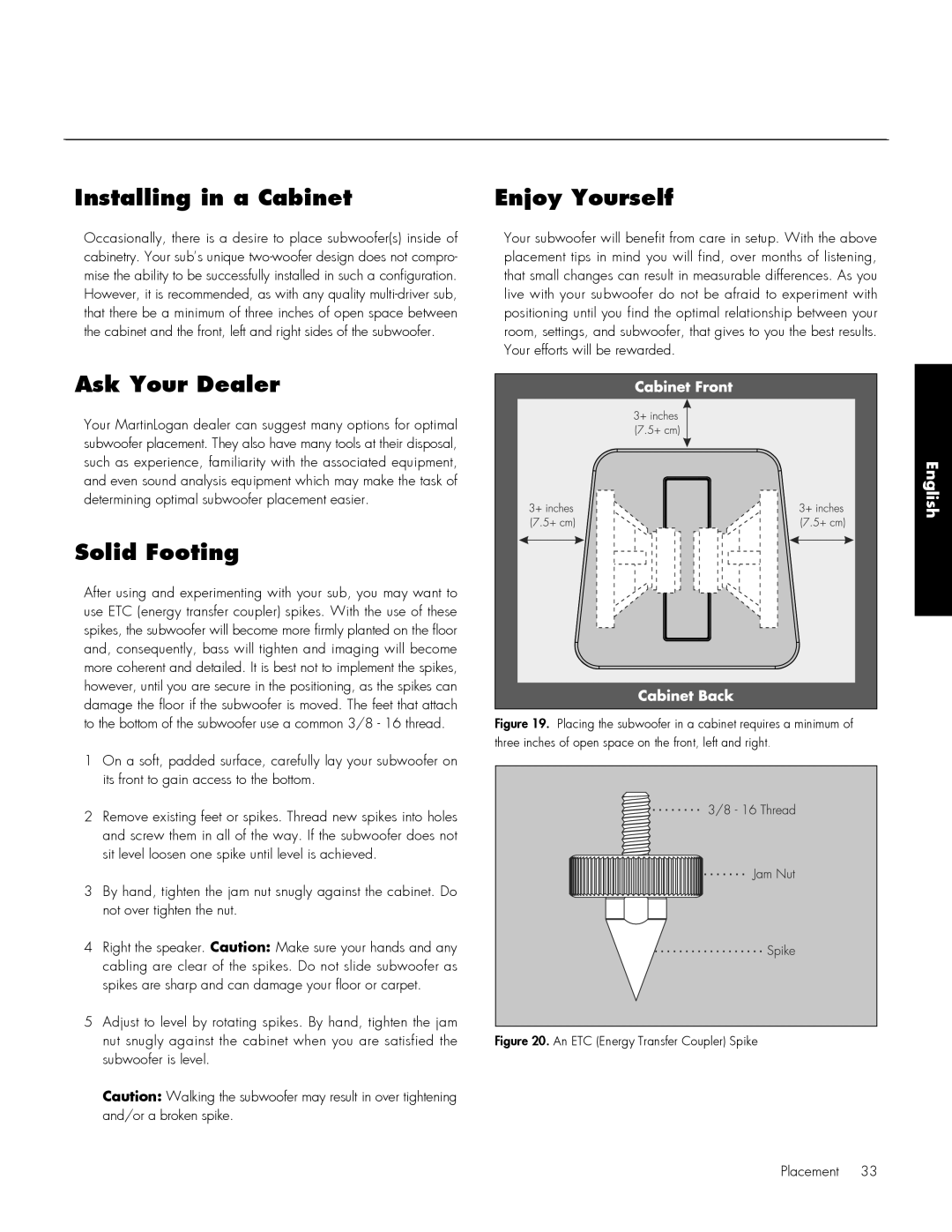
Installing in a Cabinet
Occasionally, there is a desire to place subwoofer(s) inside of cabinetry. Your sub’s unique
Ask Your Dealer
Your MartinLogan dealer can suggest many options for optimal subwoofer placement. They also have many tools at their disposal, such as experience, familiarity with the associated equipment, and even sound analysis equipment which may make the task of determining optimal subwoofer placement easier.
Solid Footing
After using and experimenting with your sub, you may want to use ETC (energy transfer coupler) spikes. With the use of these spikes, the subwoofer will become more firmly planted on the floor and, consequently, bass will tighten and imaging will become more coherent and detailed. It is best not to implement the spikes, however, until you are secure in the positioning, as the spikes can damage the floor if the subwoofer is moved. The feet that attach to the bottom of the subwoofer use a common 3/8 - 16 thread.
1On a soft, padded surface, carefully lay your subwoofer on its front to gain access to the bottom.
2Remove existing feet or spikes. Thread new spikes into holes and screw them in all of the way. If the subwoofer does not sit level loosen one spike until level is achieved.
3By hand, tighten the jam nut snugly against the cabinet. Do not over tighten the nut.
4Right the speaker. Caution: Make sure your hands and any cabling are clear of the spikes. Do not slide subwoofer as spikes are sharp and can damage your floor or carpet.
5Adjust to level by rotating spikes. By hand, tighten the jam nut snugly against the cabinet when you are satisfied the subwoofer is level.
Caution: Walking the subwoofer may result in over tightening and/or a broken spike.
Enjoy Yourself
Your subwoofer will benefit from care in setup. With the above placement tips in mind you will find, over months of listening, that small changes can result in measurable differences. As you live with your subwoofer do not be afraid to experiment with positioning until you find the optimal relationship between your room, settings, and subwoofer, that gives to you the best results. Your efforts will be rewarded.
English |
Figure 19. Placing the subwoofer in a cabinet requires a minimum of three inches of open space on the front, left and right.
Figure 20. An ETC (Energy Transfer Coupler) Spike
Placement 33
